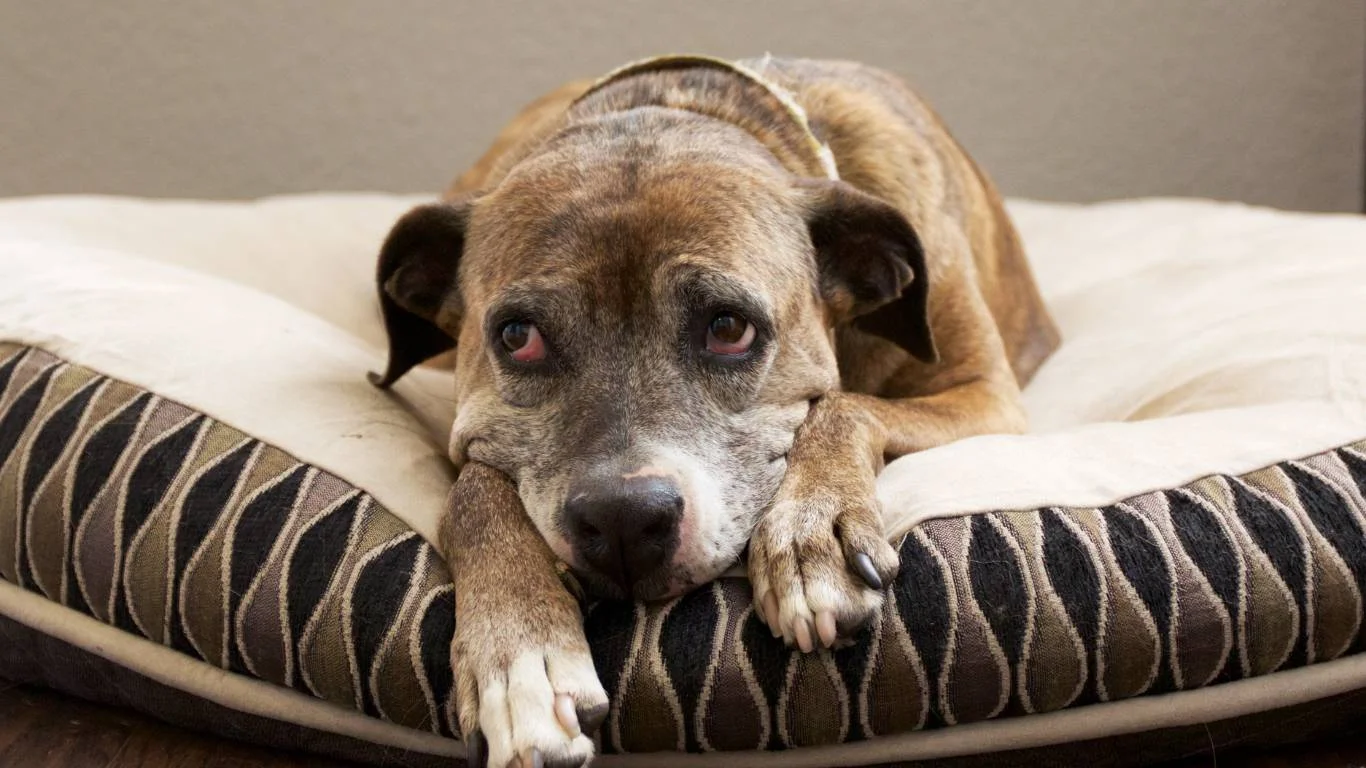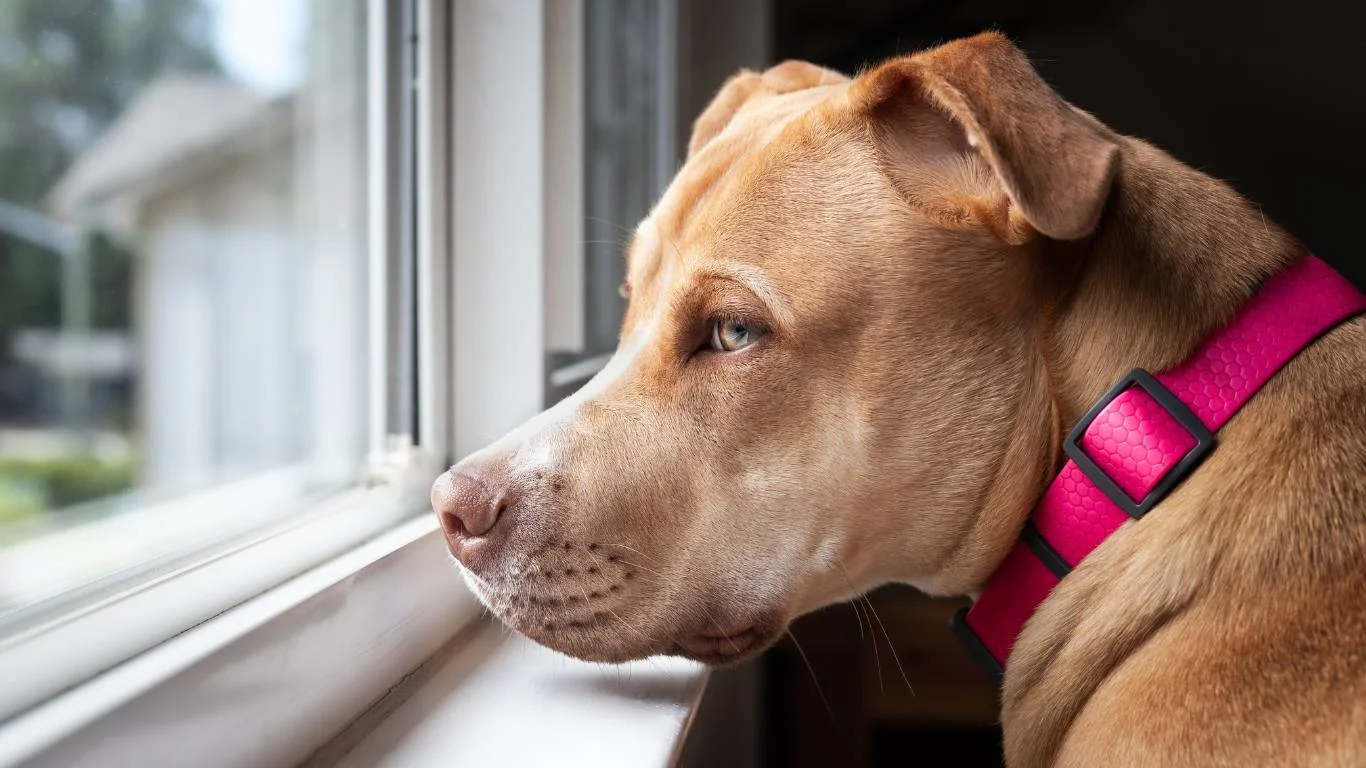Best Low-Fat Dog Foods for Sensitive Stomachs That Actually Work
Let’s talk dog food—because if you’ve got a pup with tummy troubles, you know the struggle is real. As someone who’s spent years working as a Veterinary Assistant with a deep focus on nutrition, I’ve seen firsthand how the best low-fat dog foods for sensitive stomachs can make a night-and-day difference for our four-legged friends. I’ve helped countless pet parents navigate food transitions, interpret ingredient labels, and calm inflamed GI systems. So, if your dog has been gassy, sluggish, or constantly dealing with diarrhea or vomiting, grab a coffee (or a treat for your pup) and let’s get into it—this one’s packed with advice you can actually use.
Why Low-Fat Dog Food Matters for Sensitive Stomachs

Fat might be tasty, but for dogs with digestive issues? It can be a nightmare. I’ve seen dogs come into the clinic looking downright miserable, only to perk up once we adjusted their diet to something gentler. And more often than not, the missing link was fat content. High-fat foods are harder to digest, and if your pup has a sensitive stomach, that’s like throwing gas on a fire.
Low-fat diets can help reduce inflammation, ease digestion, and even help with chronic pancreatitis or obesity—all common culprits I’d see regularly at work. I remember this sweet golden retriever named Daisy who’d always come in bloated and lethargic. Turns out, her fancy “gourmet” kibble was too rich. We switched her to a vet-approved, low-fat formula and boom—new dog. Happy belly, wagging tail.
How Much Fat Is “Low” Enough?
Here’s the deal: “low-fat” isn’t always what it seems. Marketing is sneaky, and I’ve spent hours helping clients decode the fine print. Technically, anything under 10% crude fat (on a dry matter basis) is considered low-fat, but some dogs need even less.
- Very low-fat: Under 5% (for dogs with pancreatitis)
- Low-fat: 5%–10% (great for general sensitive digestion)
- Moderate: 10%–15% (still may cause problems for some dogs)
Always double-check the label, and when in doubt, ask your vet or vet tech (like me!) to help interpret. You’d be surprised how many brands tout “digestive care” without actually lowering fat content.
Top Ingredients to Look For (and What to Avoid)

After working behind the scenes with vet-recommended diets and seeing thousands of food logs, I’ve noticed a pattern—what works, and what sends dogs straight back to the vet. The best low-fat dog foods for sensitive stomachs typically focus on simplicity, digestibility, and high-quality protein.
Look for These Goodies:
- Lean proteins: Turkey, chicken breast, whitefish, and egg whites
- Easy carbs: White rice, pumpkin, oatmeal (yes, even white rice can be a hero!)
- Prebiotics & probiotics: These are gut superheroes and often overlooked
- Omega-3s: From fish oil or flaxseed, help soothe inflammation
- Limited ingredients: Fewer moving parts = fewer things to upset the gut
Ingredients to Avoid Like the Plague:
- High-fat meats: Like lamb or fatty cuts of beef
- By-products: Mystery meat = mystery reactions
- Artificial preservatives and dyes: Just no. Ever.
- Too much fiber: Yep, too much of a good thing can lead to gas, bloating, or constipation
I’ll never forget this pug named Boomer—poor guy had chronic loose stools, and his owners had tried everything. Turns out, his “grain-free” diet was full of peas and lentils (hello fiber overload) and way too fatty for his sensitive system. One week on a low-fat, limited ingredient diet and he was back to his zoomies and cuddles. It’s honestly wild what the right ingredients can do.
Understanding the Root of Your Dog’s Tummy Issues

Every dog is different—what works for one might wreck another. That’s why identifying why your pup has a sensitive stomach is half the battle. In my experience, some of the most common causes include:
- Pancreatitis: Often triggered by high-fat meals (yep, even “just a bite” of bacon)
- IBD or Colitis: Inflammatory issues that respond well to bland, gentle diets
- Food sensitivities: To proteins like beef, dairy, or wheat
- Sudden diet changes: The classic “oops, we switched brands overnight” scenario
I once worked with a senior dachshund who developed digestive issues out of nowhere. After some testing and trial diets, we realized it was age-related IBD flaring up. A combo of prescription low-fat food, probiotics, and supportive care made all the difference.
If you’re dealing with repeat tummy issues, always loop in your vet—especially if there’s vomiting, weight loss, or lethargy involved. A diet change alone can’t fix everything, but it can absolutely help set the stage for healing.
How to Safely Transition to a Low-Fat Diet

Alright, so you’ve picked out one of the best low-fat dog foods for sensitive stomachs—now what? The biggest mistake I’ve seen dog parents make (and I totally get it, we want results fast!) is switching foods overnight. Don’t do it. Even if it’s a premium, vet-approved formula, a sudden change can send your pup’s tummy into a spiral of gas, diarrhea, or worse.
I used to help clients create what I called a “belly buffer plan.” Basically, a 7–10 day transition schedule that gives your dog’s gut microbiome time to adjust. Here’s a simple breakdown that’s worked for many of my patients:
- Days 1–3: 75% current food, 25% new food
- Days 4–6: 50/50 split
- Days 7–9: 25% old food, 75% new
- Day 10: 100% new food (finally!)
And here’s a tip from experience: mix the food with a little warm water or low-sodium bone broth (vet-approved, of course). It makes the meal easier to digest and gets even the pickiest eaters excited about their new chow.
Vet-Recommended Low-Fat Dog Foods That Actually Work

I’ve worked behind the scenes with dozens of brands, prescription and over-the-counter, and trust me—there’s a massive difference in quality. Not all dog food is created equal. Below are some tried-and-true options I’ve personally recommended to pet parents dealing with sensitive stomachs. Every dog’s different, but these are solid starting points:
1. Hill’s Prescription Diet i/d Low Fat
This is a go-to in a lot of vet clinics (mine included). It’s formulated for dogs with GI upset, pancreatitis, or IBD. Packed with prebiotics and omega-3s, and super gentle. I’ve seen dozens of dogs turn around after starting this one.
2. Royal Canin Gastrointestinal Low Fat
Another big player in the vet world. This one’s great for dogs who need seriously low fat levels, especially after a bout of pancreatitis. It’s a bit pricey, but worth it if your dog’s digestive issues are intense or chronic.
3. Natural Balance L.I.D. Sweet Potato & Fish
For those who want a non-prescription route, this limited ingredient diet is a gem. Simple ingredients, moderate fat, and a good track record with dogs that have food sensitivities. Bonus: it smells better than most fish-based foods (your nose will thank me).
4. Wellness Core Digestive Health
This one has a slightly higher fat percentage than the others, but it’s still gentle and works well for dogs that don’t need a super strict low-fat limit. It’s got prebiotics, probiotics, and is grain-inclusive—which some dogs do better with, despite the grain-free craze.
Of course, always run any new food by your vet, especially if your dog has underlying conditions. And if your pup’s extra sensitive, stick to one protein source at a time to avoid overload.
Homemade Low-Fat Dog Food Options (With Vet Guidance!)

Sometimes commercial food just doesn’t cut it—especially if your dog has multiple sensitivities or you prefer total control over their diet. I’ve helped plenty of clients work with vets or vet nutritionists to create balanced, homemade meals. But here’s the catch: homemade doesn’t automatically mean healthy or complete.
I once worked with a rescue poodle named Luna whose owner fed her homemade chicken and rice every day—sounds fine, right? Except Luna developed nutritional deficiencies because her diet lacked essential nutrients like calcium, vitamin D, and omega-3s. Homemade diets need to be carefully planned, and usually require supplements to fill in the gaps.
Simple Homemade Recipe (Vet Approved)
Always get your vet’s okay before feeding this long-term!
- 2 cups white rice (cooked)
- 1 cup boiled skinless chicken breast (shredded)
- 1/4 cup plain canned pumpkin
- 1 teaspoon fish oil (for omega-3s)
- 1/4 teaspoon calcium supplement (vet-approved)
Mix together and portion based on your dog’s weight and calorie needs. This kind of bland diet can be super helpful during recovery from GI upset or as a transition tool.
Pro tip: If your dog gets bored of the same flavor (and trust me, some will), rotate between lean turkey, cod, or even scrambled egg whites for variety.
Signs the New Diet Is Working (or Not)
Once you’ve switched foods, keep a close eye on how your dog reacts over the next 2–3 weeks. In my clinic days, I always told folks to track things like stool quality, energy levels, appetite, and behavior. Dogs can’t tell us when something feels off—but their bodies will show us.
Positive Signs:
- Firm, regular stools (yes, I said it—poop matters!)
- Increased energy and playfulness
- No more gas bombs or gurgly stomach noises
- Healthier coat and skin (bonus!)
Warning Signs the Food Isn’t a Fit:
- Persistent diarrhea or vomiting
- Sudden itchiness or skin flare-ups
- Extreme lethargy or loss of appetite
- Weight loss (especially unintentional)
When in doubt, loop your vet back in. I always encouraged my clients to bring in food logs or even pics of stool changes—gross, maybe, but it helped us track progress and troubleshoot faster.
In the next part, we’ll dig into common myths about low-fat dog diets, what to do if your dog still isn’t improving, and how to navigate long-term gut health. Trust me, this journey doesn’t have to be frustrating—when your pup’s finally feeling good, it’s all worth it.
Busting Common Myths About Low-Fat Dog Foods

Let’s clear the air—there are a ton of myths floating around about low-fat dog food, and as someone who’s worked in a vet clinic for years, I’ve heard them all. From clients convinced their dogs will “starve” on low-fat diets to folks who think fat is the enemy of all things, the misconceptions can get wild.
Myth #1: Low-fat = low-energy
Nope. Dogs don’t need a ton of fat to have energy. Carbs and protein are actually the body’s preferred fuel sources, especially for dogs with sensitive stomachs. I’ve seen high-energy breeds like border collies and boxers thrive on a well-balanced, low-fat formula—with the zoomies to prove it.
Myth #2: Low-fat food is only for overweight dogs
While it’s true that low-fat food helps manage weight, it’s also essential for dogs with GI issues, pancreatitis, or inflammatory bowel disease. I had a lean little Jack Russell come in with awful bouts of vomiting and diarrhea. She wasn’t overweight at all, but needed low-fat food to calm her inflamed digestive tract. And it worked beautifully.
Myth #3: Grain-free is better for sensitive stomachs
This one is tricky. While some dogs do better without certain grains, going grain-free isn’t a magic fix for stomach problems. In fact, grain-free diets often replace grains with legumes, which can be harder to digest and are linked to heart issues in some breeds. Don’t ditch grains without good reason. Always consult your vet first—or a nutrition-focused vet tech like me!
What If Your Dog Still Has Digestive Problems?

If you’ve already tried one of the best low-fat dog foods for sensitive stomachs and your dog is still struggling, don’t panic. Sometimes diet alone isn’t the whole solution. There might be underlying issues at play, or your pup could need a more targeted approach.
Here are a few things to consider:
- Food allergies: Your dog might be reacting to a specific protein or additive—even in a limited ingredient diet.
- Parasites or infections: Especially if diarrhea is chronic. A stool test can clear this up quickly.
- Pancreatic insufficiency: Some dogs don’t produce enough digestive enzymes, so food passes through undigested. Blood work can diagnose this.
- Stress: Yep, just like humans, dogs can get stress-induced tummy issues. Big life changes, new pets, or loud environments can throw them off.
Don’t be afraid to advocate for further testing or a referral to a veterinary internist. I’ve seen cases where it took multiple food trials and tests to uncover the true cause, but once we did? It was a game-changer for both the dog and their human.
Supporting Long-Term Digestive Health
Once you’ve found a food that works, the next goal is maintaining that gut health over time. Sensitive stomachs can flare up again if routines get sloppy, so consistency is key. Here’s how I helped clients build habits that supported their pup’s digestion for the long haul:
Stick to a consistent feeding schedule
Random meal times can confuse your dog’s system. Feeding at the same times each day trains their digestive system and helps prevent upset.
Avoid table scraps and fatty treats
This one’s hard, I know. Those puppy-dog eyes? Ruthless. But even a tiny bite of greasy meat can undo weeks of progress. Opt for low-fat, single-ingredient treats instead—like freeze-dried chicken or baby carrots (unless your vet says otherwise).
Use probiotics and digestive enzymes
I’ve seen major improvements in dogs just by adding a quality probiotic. Products like FortiFlora or Purina Calming Care (used under vet supervision) can help stabilize gut flora, especially during times of stress or transition.
Keep exercise gentle and regular
Too much activity right after meals can cause GI upset. Keep post-meal play calm, and aim for regular exercise to keep their system running smoothly.
When to Talk to a Vet (Again)
You might be tired of vet visits (I get it), but don’t hesitate to go back if your dog:
- Isn’t gaining or maintaining weight
- Starts vomiting or having diarrhea again after initial improvement
- Becomes lethargic or loses interest in food
- Has a dramatic change in stool (mucus, blood, or black/tarry appearance)
We once had a senior lab come in who’d been doing great on a low-fat food for months—until she suddenly started skipping meals. It wasn’t the food—it turned out to be a tumor affecting her digestion. So always trust your gut if something feels off.
References
Disclaimer
This article is for informational purposes only and based on my personal experiences as a Veterinary Assistant with a focus on nutrition. Always consult your licensed veterinarian before making any changes to your dog’s diet or medical care. What works for one dog might not be appropriate for another, especially if there are underlying health concerns.






